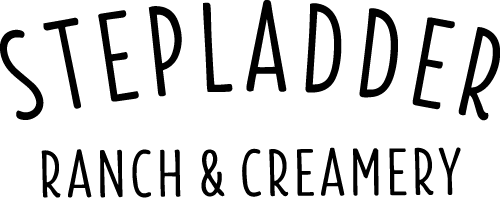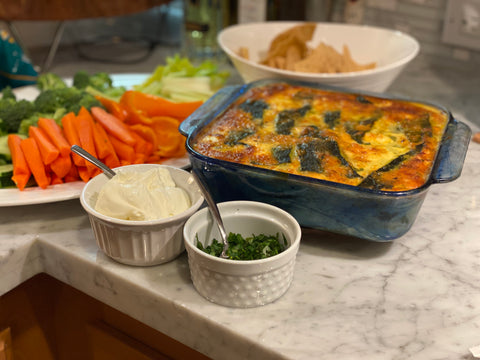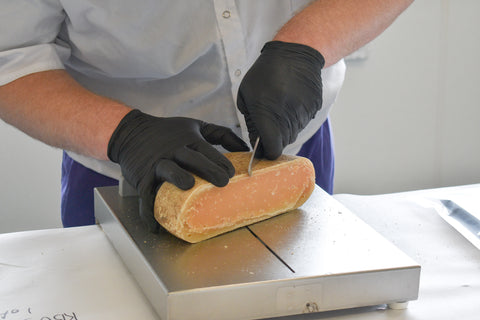There are four main ingredients in cheesemaking: milk, salt, cultures/bacteria and rennet (an enzyme). We specialize in goats milk, cows milk and blended milk cheeses and are proud to have our own herd of dairy goats on site.
People always ask about our goats. Well, the LaMancha breed is known for its tiny ears and loving temperament, but they are also amazing milkers. Their milk production is high in both volume and butterfat which is ideal for cheesemaking.

Some of our best milkers can produce over a gallon of milk per day, but we receive about a half gallon per goat per milking on average. Cows produce an average of five gallons per day, so that's why goat's milk and cheese is often more expensive. We choose to milk goats because we enjoy their company as well as their wonderful tasting milk.

The Milking Parlor
The milking parlor is where the first part of our production begins. Every day, twice a day, for about eight months of lactation from spring to fall, we milk our goats in the morning and the afternoon. The milking stand allows for up to six goats to be milked at one time. The milking system uses a pulsating vacuum, so the milk claws alternate sucking each teat, so it really mimics the sensation of a suckling kid.
Some of our goats are better producers than others. We keep detailed documentation of each goat's milking performance for ongoing analysis. Visit our other blog post to meet our top 10 milking does from 2021, and don't worry, we will be sure to update the list annually!
The Milk House and Creamery Facility
During milking, the milk travels through our pipeline system, through a filter and into the 200 gallon bulk tank for storage. The bulk tank has a refrigerated jacket and an agitator inside, so the milk begins cooling immediately and evenly. We also have a 500 gallon bulk tank for cows milk storage on site.
We do not have dairy cows in addition to our herd of dairy goats. We partner with Cal Poly Dairy which is part of California Polytechnic State University in San Luis Obispo, California, to get our supply of cows milk. Averaging around 800 gallons a week in pick-ups, we've been working with Cal Poly Dairy for a little over three years.
We're also proud to have two Cal Poly grads on staff including Stepladder Creamery owner, Michelle and Sophie, our herd manager. Both studied at the Agriculture department have have had a lot of student interns from the university.

Since we only milk the goats from spring to fall, we have about four months where we aren't getting fresh goats milk. During the months we are without fresh goats milk, we use the other tank for cows milk storage for making cheeses like Paso Vino, Moonstone, Ragged Point and Fromage Blanc (Fresh, Spicy, Everything Bagel and Marinated).
This is typically when we use our stored goats milk for aged cheeses like Rocky Butte, Goat Cheddar, Cabrillo Reserve and others. It helps to make these hard cheeses during milking season so we can have them available while we can't make our fresh goat's milk cheeses.
When we have a larger, fresh supply of goats milk, our priorities switch to seasonal products including Chèvre, Big Sur and Goatgurt. We're fortunate to have an expert group of cheesemakers who keep track of milk allocations for year-round cheesemaking based on milk supply.



